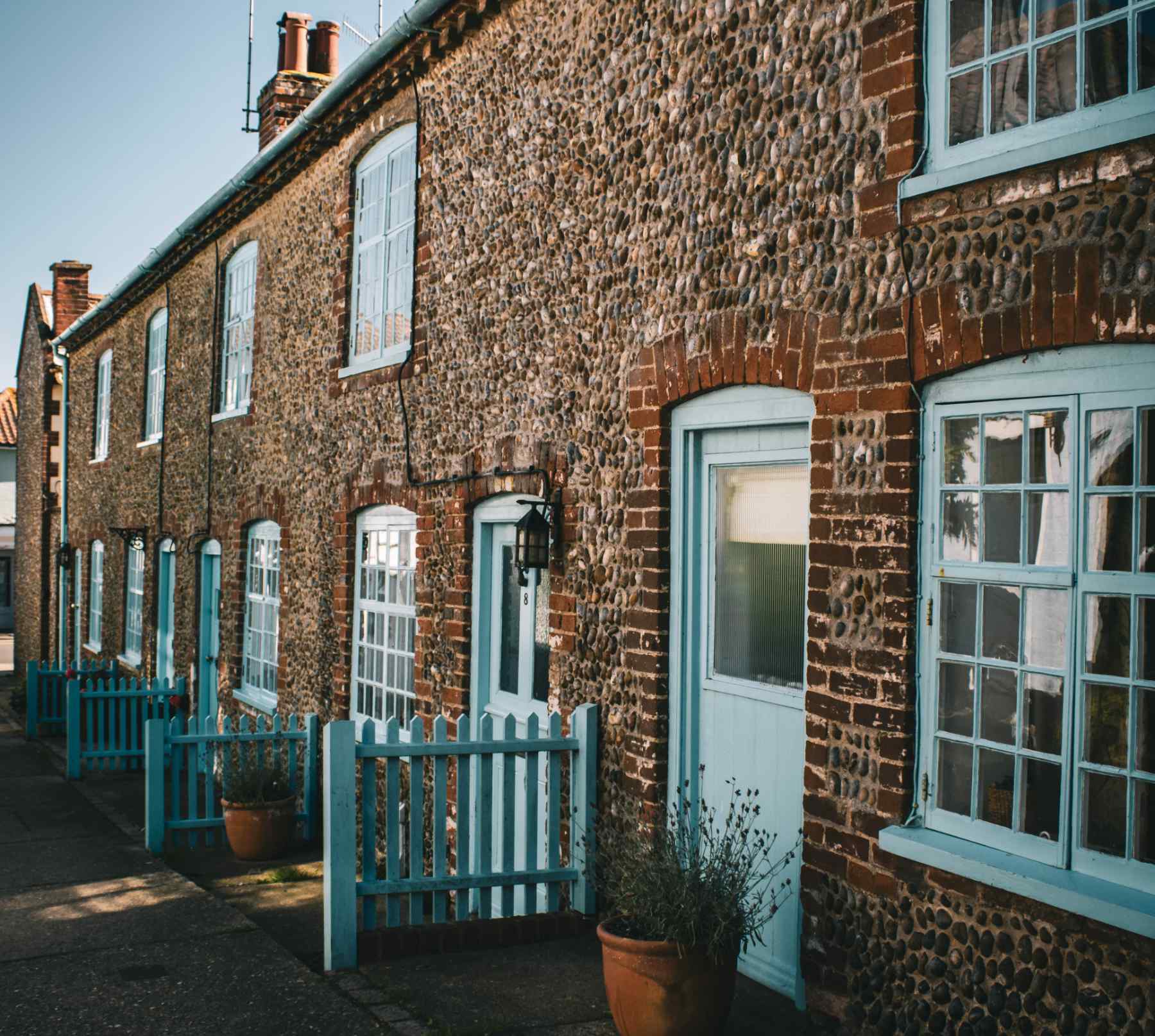In Harrogate and throughout Yorkshire, terraced homes are a common site. Historically, terraced homes have been the ideal way for cities to expand quickly, which is why there are now so many terraced houses in the UK.
For homeowners, terraced houses are a cost-effective way to get on the property ladder, and they come with many advantages. For example, terraced homes are often easier to heat than detached properties because they have fewer external walls.
While they are cost-effective, terraced houses also have unique needs and challenges from other types of property, such as fully detached houses or flats in a block. After all, terraced homes are attached to one another, and so they have unique specifications and challenges that can arise.
In this article, we outline some of the common issues that often affect terraced houses and explain how you can deal with them. You can then enjoy your terraced home to the fullest and ensure it’s always comfortable and welcoming.
Subsidence
Subsidence, where the foundations of your home start to sink into the ground and cause instability, is common in terraced houses and can be disastrous if left untreated. It can occur due to a number of geographical changes, such as the ground losing moisture. Signs of subsidence include cracks that spread diagonally across a wall and sloping floors, as well as doors and windows that warp and start to stick as they sink.
If you’re concerned about subsidence in your terraced home, then proactivity is key, and you need to get the structure underpinned as quickly as possible. Get a free site assessment from Geobear to find out more about the issue and how they can help you solve it. The company has some of the most competitive underpinning costs in the UK, as well as extensive experience underpinning terraced homes throughout the country. They can work to ensure that your home is safe and allow you to enjoy your terraced home again.
Pests
Pests are common in many types of home, but they can be particularly difficult to deal with in terraced houses. That’s because they can spread from other properties, and if you’re dealing with the issue but your neighbour isn’t, then pests, particularly small ones such as bugs and insects, might continue to visit your home. Larger pests, such as rodents, can travel between properties if there are holes, which you can probably fix easily, but insects and smaller animals can be harder to get rid of, especially across several properties.
If you’re getting pests regularly, speak to professional pest control experts, who can advise you on where they are coming from and any further steps you might need to take to prevent the infestation from returning. You should also talk to your neighbours about the issue and see if you can work together to get rid of your unwanted visitors. Some steps, such as being tidier or using natural insect repellants like citronella, can be a simple way to reduce the chances of bugs coming back to your terraced home, so try these out and suggest them to your neighbours. You’ll then be able to enjoy your home without the damage and dirt that pests can bring into it.
Damage To Shared Spaces
Most terraced houses have some form of shared space. Usually, this is an outdoor area, such as a shared alleyway between properties or an area of the garden where your neighbours can walk to access their bins and other communal outside amenities. If you’re living in a flat that’s in a terraced property, then you might have to share an area such as staircases and storage space.
Having a shared space means that more people will be using it, and that can mean that it becomes damaged quicker than usual and might need more repairs. In most cases, the repairs are the responsibility of the owner of the property, but if your home is being damaged due to a lack of care by your neighbours, then you can discuss this with them or take legal action. Usually, however, these issues are simply because of extra use, and so be prepared to take extra time over your shared outdoor spaces attached to your terraced home.
Roof Leaks From Neighbouring Properties
As terraced houses are attached to one another, a leak from a neighbour’s property can travel across to your property and cause damage. That might include leaks through their roof, or water falling from their gutters and causing damage to your home’s façade or roof. It can be tough to deal with a leak from a neighbour’s home, as you don’t own the property and might struggle to get your neighbours to deal with the issue promptly.
When dealing with a leak from a neighbour’s home, you should first establish that the issue is definitely their responsibility, then be communicative and discuss it with them. Most people are reasonable and will deal with the issue quickly, but if you have problems, then you can speak to your home insurance provider or a lawyer if necessary. In a terraced home, cultivating a good relationship with your neighbours is essential, so that you can get shared issues like this dealt with effectively without having to result to drastic action such as taking them to court.
Wrapping Up
Owning a terraced house is a great way to get on the property ladder and enjoy a comfortable, affordable home. Still, when you own your home, you’re responsible for maintaining it and ensuring it’s always in the best possible condition. That can get expensive and be challenging if you don’t know where you need to focus your time, energy and money. You also need to understand what problems can come from a terraced home that are unique to this type of property.
Luckily for you, this article should help you to understand the common issues that affect terraced houses and how you can deal with them promptly so that your is always safe and comfortable for you and all the members of your household. You’ll then be able to get the most out of your terraced home and create a space that you feel comfortable and happy living in.







